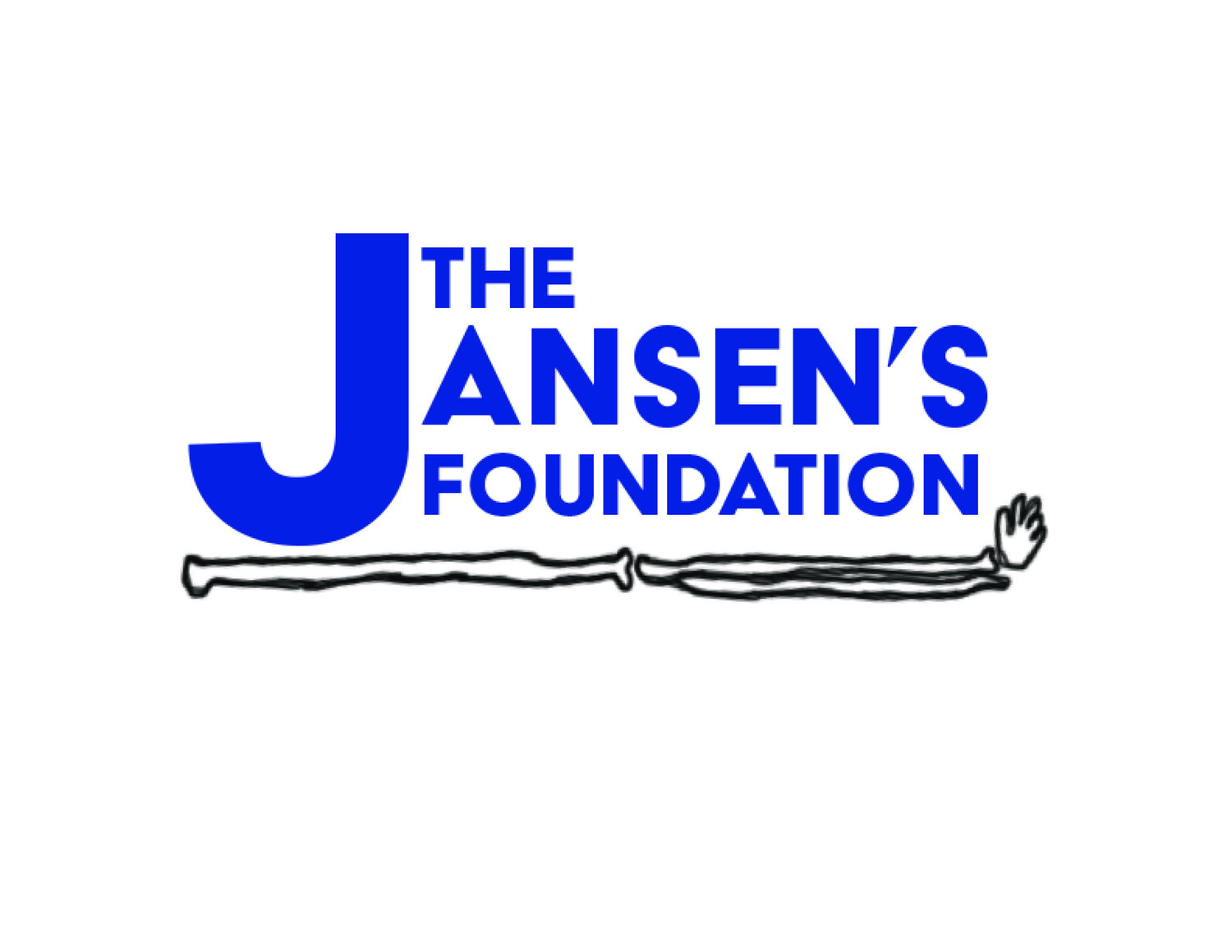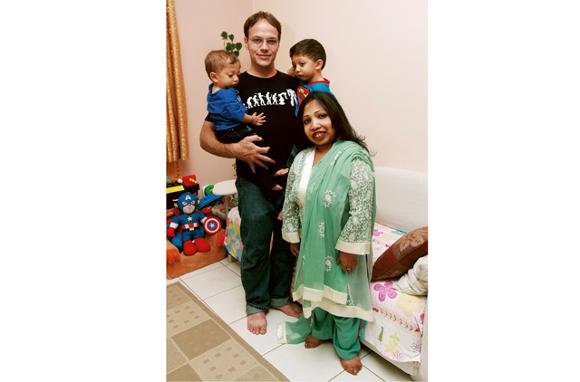Some battles are lost, some are won, but mine is ongoing. In fact, it multiplied threefold after I learned that both my sons Arshaan, five, and three-year-old Jahaan have inherited my condition, which means they may never grow tall, be able to walk without aid or have normal-looking facial features.
The reason is they share my rare bone condition called Jansen’s Metaphyseal Chondrodysplasia, a genetic disorder characterized by short-limbed dwarfism.
At 34, I am probably the oldest surviving person with this condition and, including my two boys, there are now just 22 such cases in the world, according to my doctor.
Although as a child, I’ve not been able to do a lot of things like run and play like my friends, I’ve never felt inhibited by my condition. I’ve never allowed it to affect me in any way. If anything, it has only made me stronger and has encouraged me to make the most of my life. I’m also teaching my kids to do the same and have a never-say-die attitude.
I remember my mother Sunitha Nizar telling me that I looked like a normal healthy 2.2kg baby when I was born in Dubai on January 28, 1978.
However, I developed pneumonia when I was just a few days old and was given strong doses of antibiotics. She says her eyes used to fill with tears whenever the nurses would come by to give me the injections because I used to cry from the pain for hours.
My mother told me that she and my dad used to constantly check to see that I was achieving my regular growth milestones. Apparently, I was always reaching them later than my peers, but every time I achieved them – like speaking my first word, ‘mama’ – the thrill and excitement at home knew no bounds.
It was only at the age of three that I took my first steps – a monumental moment for my family. I was tiny for my age, but my parents weren’t too worried. They just thought I was petite.
However, their happiness was short-lived as my parents discovered that my legs bent at the ankles when I walked and it was hard for me to take more than a few steps. The doctors who checked me because of my bent ankles misdiagnosed my problem and began treating me for rickets, which didn’t help my condition.
In fact by three, I’d started developing unusual facial features as well, such as prominent eyes and cheeks and abnormal skull shape – suggestive of a congenital disorder or birth defect.
My parents guessed something was not right and took me to several doctors, but none could identify exactly what the problem was. The common diagnosis was that my legs and face would require surgery later in life.
Surprisingly, I don’t remember being upset when I saw my misshapen face or short stature, bent knees and arms. I just believed that some people were born like me.
‘My pillar of strength’
It wasn’t long before my walk was a waddling gait and my legs began to bow into a ghastly C shape. The bulging bones on my face were worrying my parents, but I was very sharp mentally. I was chatty, and eager to learn.
My father, A.K. Nizar, an electrical engineer at the Dubai Electricity and Water Authority, was my pillar of strength. His policy was, ‘If anything can be done, I’ll get it done.’
He wasn’t willing to allow anything to come in the way. No tears were shed over my condition, and no sympathetic looks were cast in my direction. I had a regular normal environment at home where there was fun and games and laughter.
My father was determined to give me the best treatment he could afford and to that end, he took me to London, where my maternal uncle was based, for my first set of corrective surgeries. Even the hospitals there couldn’t diagnose the problem, but based on my condition, they suggested surgery to correct
the shape of my bones.
I spent a year there away from my family undergoing physiotherapy after the surgery. I missed my parents but I was quite happy to play in the snow and experience my first white Christmas under my uncle’s care. I still remember making snowmen and playing with the children in our neighborhood.
By the time I was six, I needed a new set of corrective surgeries and this time my father decided to take me to Children’s Hospital Los Angeles where he hoped I would get better help. But I was misdiagnosed for a second time.
The first time the doctors believed I had rickets, and this time they said I had a rare incurable bone disorder named Ollier’s Syndrome, which is a nonhereditary disorder where benign tumors develop close to growth-plate cartilage. Only one in 100,000 have this.
They suggested a different series of corrective surgeries, and so began my life of checking into and out of operation theaters in the US and in India, where we are from. Fortunately, the surgeries did not affect my schooling and I managed to do very well academically. I enjoyed school and didn’t want to miss it.
Financially, these were difficult times, as all my father’s savings went towards my treatment. My relatives chipped in as treatment for my condition was not covered by insurance.
Just like my brothers
Although I looked disproportionately short – just 129cm – with skeletal abnormalities, it didn’t really bother me because even as I was growing up my parents and siblings – elder brother Nabeel and younger brother Neeju, neither of whom have the condition – didn’t treat me as a special needs person.
I remember my mother making me do regular chores – like cleaning and dusting the home, doing the laundry, just like others in the family. I wasn’t given any extra privileges because of my condition, which helped me a lot as I began to learn to take care of myself.
I went to a regular school – St Mary’s High School in Dubai – and received straight As throughout. I was even offered a full scholarship to study journalism in the US, but because of my health, I was not able to take it up.
My school friends didn’t treat me any differently. I suppose it was because academically I was excellent. I was also encouraged by my parents, particularly my mother, to participate in all activities I could at school and I was very good in theatrics and was a regular member of the school dramas.
By 16, my parents along with Nabeel, now 38, and Neeju, now 32, and I left Dubai to settle in India as I needed regular surgeries that required years of constant professional monitoring. In total, I had 32 operations.
Despite the pain of the medical procedures, I wasn’t willing to just stay at home. I was keen to study and after graduating in English, went on to take a master’s degree then an M Phil in English.
I also secured a scholarship to do research in English in Canada. For a brief period, I also worked as an English professor in Kerala. It was during that time that I underwent another operation where rods and pins were inserted into my legs to straighten them. It was a Russian procedure called Illizaro.
After this, I remember going to college and the only way I could move around was either in a wheelchair or using a pair of crutches for short distances. But I stayed positive throughout it all – I was sure I would be able to lead a near normal life someday.
The meaning of happiness
At 25 I was able to walk without aids for short distances as the results from the Illizaro had started to work. I decided to return to Dubai to find out what my calling in life was. It is from here that life began to change. I accepted a teaching job at the Modern English School. It was a challenge, but I enjoyed it.
Of course, it was difficult to get past my disability and many hours were spent telling the grade 8 kids what my world was like. They used to ask me whether I was in pain, whether I could walk without difficulty, what it was like to have the condition... Almost all the children, who were aged 12-13, were taller than me but they were all very caring and helpful and gave me all respect due to a teacher.
My life took a completely different turn when in 2006 I met a man named Adam J Timms, an American from Nebraska, online. After exchanging a few introductory emails, we soon got to know each other better. I told him everything about my condition including the fact that I had bent bones, was short and unable to walk without aids.
We communicated via email for seven months and when he landed in Dubai to meet me, little did I know that I was about to tie the knot with him. It was a momentous occasion. I realized that happiness is to love and be loved.
The same year I married him. My next dream was to have a child. I consulted several doctors and specialists, and from those that confirmed I could conceive, I was told my baby would not inherit my condition because we were under the misconception that I had Ollier’s, which is not genetically transferable. I decided to take the plunge into motherhood. I delivered a beautiful healthy baby, Arshaan.
When he was 15 months I conceived again at 32. I flew to my hometown Kerala to have my baby and it was during that time that Arshaan’s delayed developmental growth caught our attention.
I consulted a paediatric geneticist, Dr Sheela Nampoothiri, at the Amrita Institute of Medical Sciences and Research Centre, Kochi. She confirmed that we had the very rare condition known as Jansen’s Metaphyseal Chondrodysplasia.
I had been living with an incorrect diagnosis for 32 years, which was a shock. It was especially upsetting as I didn’t know my condition was genetic and could be passed on to my children.
We did tests on our second son and found that he too has the condition. I was shocked to learn that and it took me well over a year after Jahaan’s birth in 2010 to rebound, but today I am stronger. I have once again immersed myself in teaching. I also earned a driving license and can drive around in a modified car.
I have also agreed to become the subject for Dr Nampoothiri’s research. I have to regularly send the calcium levels in my blood and progression reports required for her study. I am also documenting my kids’ progress – everything that might be useful for the study.
Adam and I have decided to start the kids on an intensive physiotherapy now. They have to undergo 40 minutes of stretching, bending and specific exercises to tone their muscles every day. It is painful, but it helps build up their muscle tone, which hopefully will prevent their bones from bending too much. Jahaan seems to be responding well, but I’m not sure if it’s too late for Arshaan.
The boys’ therapist, Rajiv Shankar, and Adam and I believe that since there is no known cure, the best we can do is to contain it during their growth phase. I do not really know if we’re doing the right thing. The pain from the therapies is more than anyone can bear. I’m sad my children have the condition, but I try to teach with there’s a reason to smile every day. We might all be small but there’s a lot of happiness in our life and I’m teaching to be strong and believe that anything is possible.
Neena Nizar, 34, lives in Dubai.
https://fridaymagazine.ae/life-culture/neena-nizar-i-m-tiny-but-i-make-the-most-of-life-1.1127688
Dr. Neena Nizar, Adam Timm and their boys.


